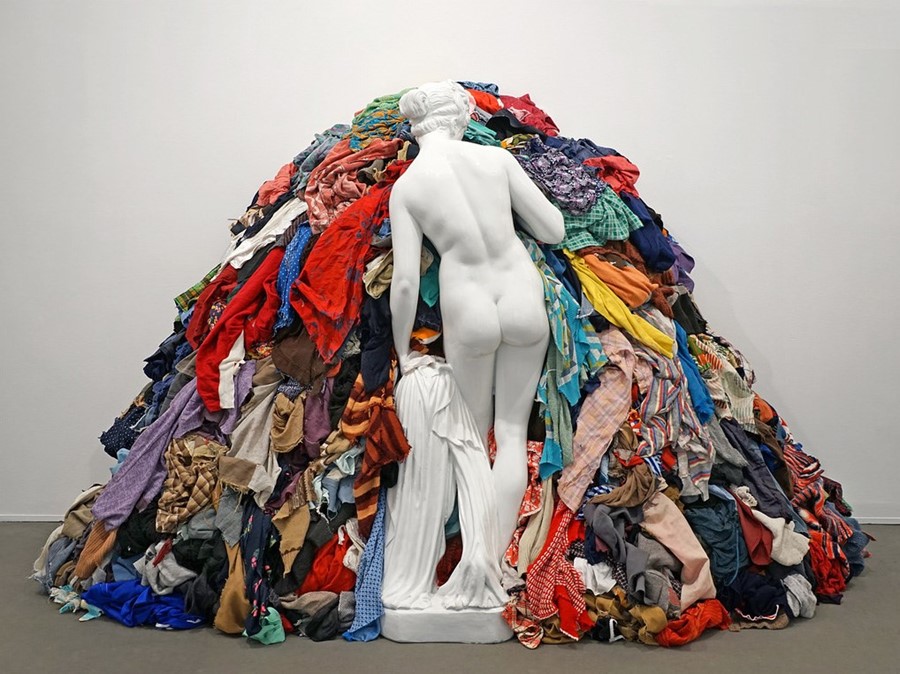With consumers, designers, students and politicians taking steps towards a more sustainable future, this year could see the fashion industry transformed, writes Sophie Benson
From clothes burning scandals to eye-opening BBC documentaries, a series of turning points have gathered pace and we sit at the cusp of what could be the most significant year yet for sustainable fashion.
A new level of fashion-focused scrutiny has crashed into the limelight upon a wave of heightened environmental awareness and activism, catalysed by the culture of instant information. Given 12 years until we’re at the point of no return with climate change and overwhelmed by inaction – or flat out refusal to believe – at the top, our instinct is to find comfort in the elements we can control. And in our droves, we’re turning to the contents of our wardrobes as a springboard for change.
2018 saw the value of the ethical clothing market increase by 19.9 per cent according to Ethical Consumer, engendered by growing acknowledgement of the impact of consumer choices. With 34 per cent of 18 to 24 year olds and 29 per cent of 25 to 34 year olds withholding spending when a product has a negative impact on the environment, the fashion industry needs to listen up, if not for the planet then at the very least for its bottom line. And slowly, it’s starting to.
As brands clamour to prove their green credentials, the number of sustainable womenswear items has jumped 128 per cent. Even Versace, which has long been a cultural emblem of excess, has given itself a sustainable makeover; perhaps mitigating its bottom-of-the-list ranking on the Fashion Transparency Index. You can now find organic cotton T-shirts for sale on their site but the bigger story is their new sustainable concept boutique. Designed by Gwenael Nicolas, it has been awarded a gold level rating by LEED (Leadership in Energy and Environmental Design).
The first iteration of the boutique opened in Bal Harbour, Miami Beach and, while it’s expectedly gold and shiny, it points to a new era in retail design for the year ahead, compounded by Stella McCartney’s new 23 Old Bond Street spot which boasts the ‘cleanest air in London’.
“2018 saw the value of the ethical clothing market increase by 19.9 per cent, engendered by growing acknowledgement of the impact of consumer choices”
They may sit at opposite ends of the spectrum aesthetically, but Stella McCartney and Versace have yet more in common: both brands are fur-free. Versace, alongside Burberry, Gucci, DKNY, Calvin Klein, Michael Kors, Jean Paul Gaultier, Diane Von Furstenburg and DKNY, announced fur will no longer feature in its collections. And to round off the slew of announcements, London Fashion Week was the first of the major cities to declare fur-free status in September 2018.
While the fur industry is biting back, citing concerns around the use of plastic in faux fur (it’s reported that real fur can have between three and 10 times the environmental impact of faux), both consumers and brands are standing firm in their anti-fur position, and we can expect the controversial material to retreat even further from catwalks over the next 12 months.
As big brands race to retrofit their operations to fall in line with eco expectations, a new breed of designer is building brands on green foundations from day one, signalling a new dawn in fashion. One where sustainability, luxury and truly exciting design sit in harmony.
Le Kilt, fresh off the release of a sustainable denim line, centre patience, craft and integrity within their practice; Marine Serre has vitalised the industry with her intriguing composites and covetable crescent moon motif, underpinned by sustainability without an eco-fashion trope in sight; GmbH continue to evolve their club-inspired roots with silhouettes that traverse both the skintight and the boxy and their trademark PVC trousers, made mostly from upcycled deadstock and organic fabrics; and Westminster graduate Priya Ahluwalia bagged the H&M Prize 2019 following the release of Sweet Lassi, a book which both showcased her spliced and reworked MA collection and exposed fashion’s waste problem.
“There’s no bigger luxury than our future” – Donatella Versace
Innovative new designers and sustainable makeovers get us somewhere but fashion, a disparate and broadly unregulated industry, has so far been controlling its own narrative; spotlighting the good and burying the bad. For all the talk, all the ‘greenwashing’, fashion continues to pollute, abuse and overuse.
However, the public discourse around the issue has caught the attention of bodies that can make real, sweeping reforms and it’s that which may be set to incite real change in 2019.
Stella McCartney is leading a UN sustainable fashion charter, instigated by the climate change secretariat, which will include 16 commitments across sourcing, design and manufacturing for signatories to abide by. Elsewhere, the Environmental Audit Committee’s inquiry into the sustainability of the fashion industry remains open after gathering reams of evidence and questioning key fashion retailers.
The success of the Bangladesh Accord, created in the wake of the Rana Plaza disaster, shows just how effective legally-binding, public accountability can be. With MPs probing into once easily hidden scandals in the public forum, the threat of top-down change and legislation has the potential to be transformative.
Green Party’s Caroline Lucas has been vocal in taking fashion brands to task publically over their harmful practices, and Labour’s Mary Creagh (chair of the Environmental Audit Committee) set the tone for a more accountable future for fashion when she asserted that “doing nothing is not an option”. Clearly, the issue isn’t going to be handily forgotten anytime soon. If brands, consumers and governing bodies work successfully in tandem, 2019 could be the backdrop to a transformed fashion industry. And it’s about time. As Donatella Versace put it: “There’s no bigger luxury than our future.”
